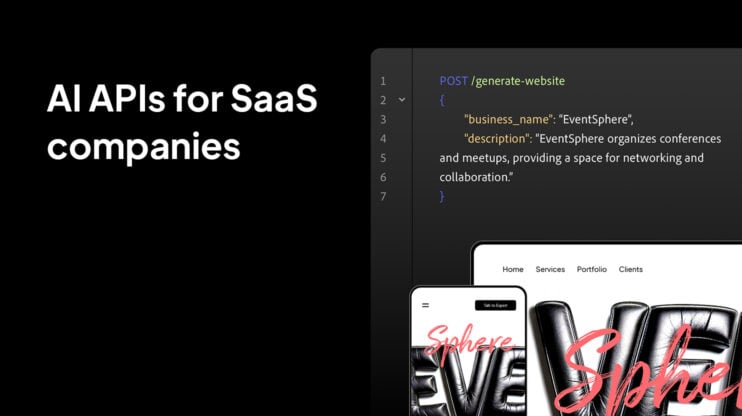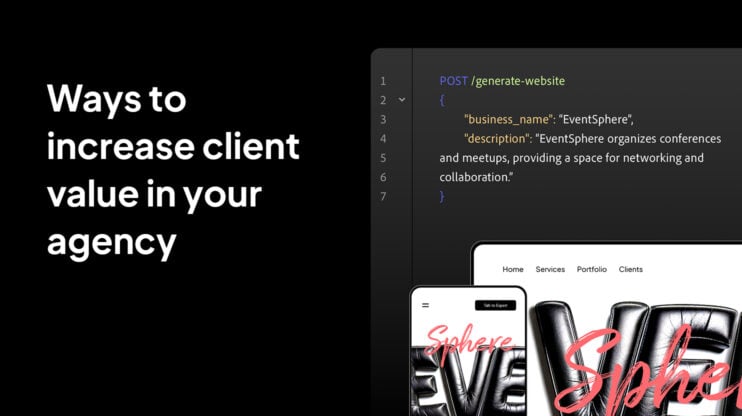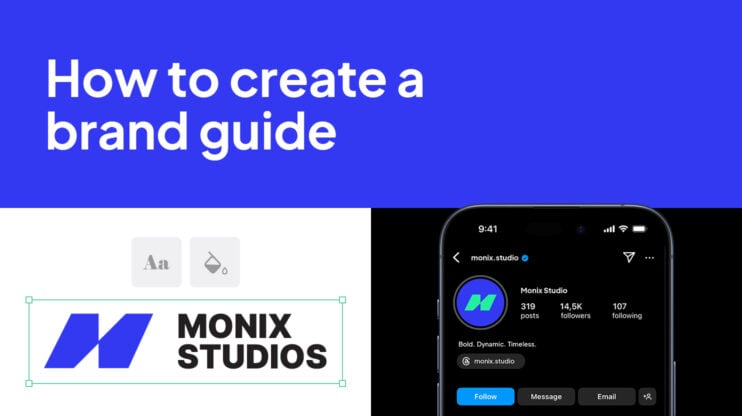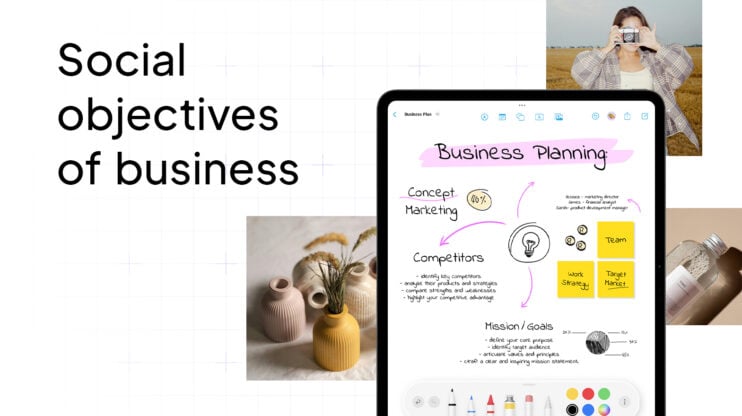The demand for SaaS platforms, hosting providers, and digital tools to offer built-in website creation has never been higher. Users now expect to launch a clean website right when they create an account, start a campaign, or activate a new hosting plan. They don’t want to switch tabs, hunt for templates, or learn a drag-and-drop interface before getting value. What they want and need is a working site, fast.
This shift in expectations has turned API website builders into a true competitive advantage. They let you embed site creation directly inside your product; fully white-label, automated, and often powered by just a few API calls. Instead of pushing users to an external builder, your platform becomes the place where everything happens.
In this article, we’ll discuss why API-driven builders are gaining popularity so rapidly, what capabilities are most important, and how the provider platforms compare.
Glossary: API terms explained
Choosing a website builder API is easier when you understand the vocabulary. While these terms might seem intimidating, the concepts behind them are simple. Let’s look at the common API terms you will need.
- REST API — A set of endpoints your system calls to create or manage sites.
- GraphQL — An API style that lets you request exactly the data you need in a single query.
- Webhooks — Automated notifications sent to your system when an event occurs, such as a site publish.
- Authentication — The method an API uses to verify that your system has permission to make requests.
- Rate Limits — The maximum number of API requests allowed within a set time period.
- Headless Builder — A builder that provides the backend engine while you control the frontend and UI.
- White-Label Builder — A builder that removes provider branding so the experience looks native to your product.
- No-Code Builder — A tool that lets users create sites without writing code.
Why API-driven website builders are becoming essential
A decade ago, embedding a website builder into your software was a complicated, expensive, and often messy process. Most popular builders were designed as standalone apps and didn’t offer serious API access.
But market expectations shifted dramatically. Customers now assume that websites should appear instantly.
Automation plays a major role in this shift. Modern website builder APIs can generate a complete site from just a few inputs.
Equally important is the move toward API-first architecture. These builders are designed to be controlled programmatically. So, companies get freedom to use the backend engine, embed the provider’s editor, or build fully custom frontends.
What to look for in a website builder API?
You can find many website builders with “some” API functionality, but not all APIs are the same. The difference between a shallow, bolt-on API and a deeply integrated one is huge.
Core features
- Programmatic site creation, updates, and publishing
- Full white-labeling (custom URLs, dashboards, editors)
- Automated pages/layout generation
- Scalable template control
- Minimal manual design required
Developer experience
- Clean REST API + simple authentication
- Clear docs with code examples
- Useful webhooks + predictable rate limits
- Easy sandbox for testing
Pricing
- Transparent tiers
- Per-site, per-workspace, or usage-based options
- Usage-based for SaaS; predictable tiers for hosting companies
Top website builder APIs for SaaS and hosting providers
Below is a deep look at the leading platforms offering embedded website creation via API. Each has strengths and trade-offs, and each fits different needs.
10Web Website Builder API
10Web has emerged as one of the most complete and future-focused white-label website builder API platforms. It’s designed for SaaS platforms, hosting companies, and enterprise teams that want full automation and a branded user experience.
What sets 10Web apart is its emphasis on automation. The platform uses AI to generate entire websites based on prompts, industry categories, or existing URLs. This allows SaaS platforms to offer “instant website creation” as part of onboarding – one of the fastest ways to increase user activation.
Since 10Web’s system is API-first, everything from site creation to publishing can be controlled programmatically. The REST API is well-documented, with endpoints for workspaces, templates, pages, media, and publishing. On top of this, 10Web offers a completely white-label editing environment, so your users never have to know a third-party builder powers their site.
This combination of automation and white-label flexibility makes it especially powerful for marketing platforms, CRM systems, and eCommerce tools, where onboarding friction kills conversions. Pricing is built for scale, with usage-based components that fit SaaS economics.

Request your API demo now
See how easy it is to integrate AI website generation into your platform!
Wix Headless
Wix Headless offering tries to bring some of that power into an API-controlled environment. It gives developers access to components, data models, and content, but still ties them into Wix’s infrastructure.
This model works well for teams that want to integrate Wix’s design ecosystem without needing complete backend flexibility. However, Wix still maintains strong branding requirements in many parts of its workflows, which limits how white-label the final experience can be. Integration also tends to be more complex, partly because Wix’s systems were not originally designed for API-first operation.
This makes Wix Headless most useful for apps that want a hybrid approach: some embedded components, but not full automation.
Webflow API
Webflow has built a strong following among designers, and its recent API improvements and DevLink functionality aim to make the platform friendlier to developers. It is good at visual design, animation, and polished templates, but its API layer is still evolving.
While Webflow allows programmatic control over content and CMS structures, it doesn’t yet provide full automated site creation. That means many workflows still require human intervention inside Webflow’s editor. This makes it less ideal for SaaS platforms that need instant website generation, but excellent for products that want to offer a premium design-centered experience.
Because branding and UI embedding are limited, it’s difficult to use Webflow as a fully white-label API builder.
Duda White Label API
Duda has long been known for its agency-friendly tools, and its white-label offerings are strong. The platform provides a mix of dashboards, templates, and API access that allow agencies and SaaS tools to offer branded website creation.
Duda’s API is practical and well-rounded, especially for publishing workflows. However, compared to players like 10Web, its automation capabilities are more limited. Duda works best when human designers are still part of the process. It’s a solid choice for SMB-focused tools and platforms that want white-label publishing but do not require deep backend control.
Site123
Some smaller platforms offer basic website builder APIs that allow simple site creation, template selection, and publishing. These are useful for products that need an uncomplicated, low-cost option. However, they lack the depth, scalability, and automation features required for larger SaaS integrations.
Such platforms fit well for small toolsets or MVPs, but become limiting as user expectations grow.
WordPress with automated deployment APIs
WordPress is not a website builder API in the traditional sense, but managed hosts now provide APIs to automatically spin up new WordPress instances with pre-selected themes or plugins. This creates a middle ground, which is extreme flexibility but more setup work.
WordPress makes sense for platforms that want control over every aspect of the stack, but it requires more maintenance and custom development than dedicated website builder APIs.
Conclusion
Embedding a website builder API is now essential for SaaS and hosting platforms that want to deliver fast and easy onboarding. Users expect a working site as soon as they sign up, which requires a builder that automates setup, integrates smoothly, and supports full white-label control. Many providers offer only partial solutions, and their trade-offs in flexibility, branding, or automation can limit how seamless the experience truly feels.
In that landscape, 10Web stands out as the most complete and scalable choice. Its API-first design, strong automation layer, and fully white-label environment make it well-suited for platforms that need fast, reliable site generation at scale. Other builders excel in niche areas, but 10Web delivers a balanced mix of speed, customization, and developer experience.
FAQ
What is a website builder API?
Why embed a website builder into a SaaS or hosting product?
What features matter most in a website builder API?
What makes an API-first builder different from a basic API?
How do website builder API pricing models work?
What’s the best API option for SaaS platforms?

Request your API demo now
See how easy it is to integrate AI website generation into your platform!












